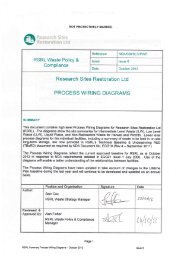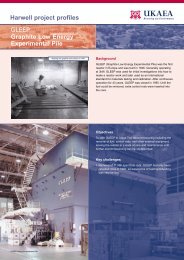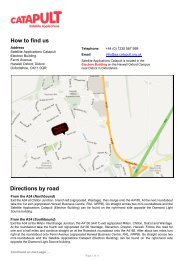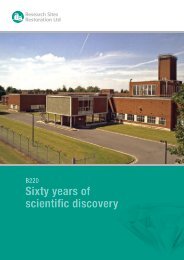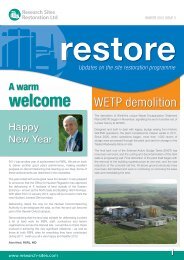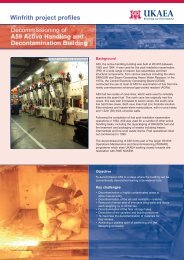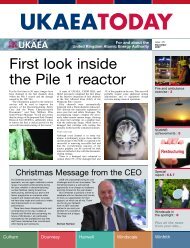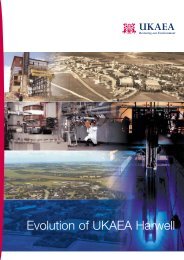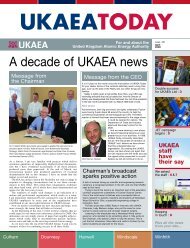RSRL Integrated Waste Strategy - Issue 5- Oct 2012.pdf
RSRL Integrated Waste Strategy - Issue 5- Oct 2012.pdf
RSRL Integrated Waste Strategy - Issue 5- Oct 2012.pdf
Create successful ePaper yourself
Turn your PDF publications into a flip-book with our unique Google optimized e-Paper software.
NOT PROTECTIVELY MARKED6 HARWELL INTEGRATED WASTE MANAGEMENT STRATEGY195. The Harwell integrated waste management strategy is developed from the results of aseries of decommissioning and waste management option studies and BPEO studies.Optimisation was achieved with the completion of the Harwell site waste BPEO study at theend of 2008. By adopting the BPEO approach for all waste on the site, both radioactive andnon-radioactive, there has been an opportunity for all relevant and interested stakeholdersto be consulted. <strong>Issue</strong>s identified as a result of stakeholder engagement which have aneffect on waste strategy include:• The site end state should be 100% de-licensed to enable sustainable developmentof the site as part of the Harwell Oxford Campus.• The health and safety of workers and public and protection of the environment aretop priorities.• The impact of transport, particularly of radioactive waste, concerns local residents.196. The BPEO process is not the only approach to stakeholder consultation, as described insection 4.6. Regulators have frequent interactions with the site relating to waste strategy.<strong>Issue</strong>s identified as a result of consultation with regulators on waste strategy include:• EA is keen to see evidence and examples of using best practicable means tominimise waste arisings.• ONR (CNS) has been consulted and has given advice on security issues relating tothe development of the waste strategy.• Consultation with NDA has resulted in encouragement or, where appropriate,approval for specific waste strategies.197. Going forward, BPEO and BPM studies will be replaced by BAT studies in order tocomply with the Environmental Permitting Regulations 2010.198. Annex 1 summarises the inventory of wastes in stock or expected to arise at Harwell andcontains the following information:• A description of the waste• Estimated waste quantities• When the waste is expected to arise• When and where the waste will be processed• When and where the waste will be stored• When and where the waste will be transferred off-site199. The progress of the strategies for ILW can be established by the status of approvalsfrom RWMD for the proposed packaging routes against the requirements for safe disposalunder the phased disposal concept. The definitions of the stages of Letter of Complianceare as follows:• Conceptual LoC: presents known information regarding the waste, the proposedconditioning method and process, and the expected average and maximum packageproperties. This stage takes place before resources are committed to a wastemanagement strategy. Action points may accompany a Conceptual LoC which willneed to be completed by the Interim or Final submission.• Interim LoC: presents further information on the waste, method of conditioning andresults of waste form trials. It describes the facility and conditioning process indetail.<strong>RSRL</strong> IWS (<strong>Issue</strong> 5 – <strong>Oct</strong>ober 2012)59




